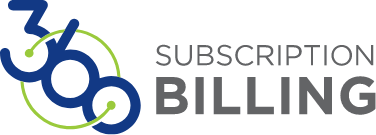In this Product Tour video, we will focus on Subscription Device Tracking and common IoT use cases:
- Introduction: The IoT Sales to Cash Process
- NetSuite with 360SB IoT Solution Overview
- Reference to Detail Process Flow
- Product Tour: Order to Cash
- Contract Sites, Devices & Assets
- Automatic Contract-level Recurring Billing
- Contract Add-ons: Order to Cash
- Consolidated Billing & Renewals
Thanks for checking out our IoT Product Tour video!
Click here for more product tours!
IoT Product Tour NetSuite with 360 Subscription Billing Transcript
Introduction to 360 Subscription Billing for IoT Companies
Hey, everybody. My name is Ryan Brown, and I’m here to take you on a product tour of 360 Subscription Billing for IoT companies. We’ve got quite a few companies that fit within this very twenty first century vertical because, you know, IoT companies are kind of complicated. Right? Am I a manufacturer wholesale distributor of you know, these really cool neat devices or am I a SaaS company, I’m probably both.
So that means I usually need a system like NetSuite that has full ERP. And but yet, I also need a subscription management and billing system. So, you know, within NetSuite, from the sales to cash process, you know, all my sales and CRM functionality is there. I can have that an external system too. If I need to, to do my op quote and sales activities, but the order is really where everything comes together in NetSuite, the fulfillment, or when, you know, the hardware is provisioned, the subscriptions are installed, or started.
The initial invoicing, the recurring invoicing and the renewals, you know, you could do all of this stuff in NetSuite with 360 Subscription Billing. Your sales transactions and nets, we can become your IoT add-ons, your upsells, down sells, your renewals, your orders, because the 360 Subscription Billing works with native, NetSuite transactions, like sales orders, you’d let you keep your inventory, non inventory, and services items together. Item groups kits and whatnot.
That way you can forecast, activate, and all of that, with those different product types together. The fulfillment quite very uniquely in our module, allows you to start your subscriptions and relate it with devices, sites and assets. So think, you know, device tracking asset tracking, you know, from my customer sites, related to my subscriptions, particularly as I have to have box swaps and support for those IoT devices once the subscription has begun. For the initial invoicing, you’ll see in the product tour, we automate the, proration, for the initial billing period, particularly if you’re hang on additional, installations, or activations of IoT device subscriptions to an existing contract.
That you want to all bill together. And then, of course, when it comes together at the end, you’re looking for the automated, consolidated invoicing, in recurrence and in those payments, those credits, those renewals. So this is a more complicated detailed version of that for those of you that’d like to pause and inspect it a bit. But I will keep rolling into the product tour.
NetSuite Dashboard and Preferences for IoT Companies
So you’ll see NetSuite here. We’ve got some reminders on the dashboard that are typical for IoT companies, you know, how many orders are still pending, fulfillment? I haven’t installed. Right?
Then typical stuff, like how many invoices do I need to follow-up on payment, but You can see we’ve even got reminders for devices pending return for box swaps and whatnot. There’s a few preferences, particularly this one. Creation of contract line based upon the fulfillment of a sales order, whether that’s a full quantity or you want to, you know, have a multi quantity and fulfill in parts to create multiple subscriptions from the same original sales order line, you can do that. And then, of course, activation of our site device, and asset features is also pretty key.
So I can have inventory items like devices, stencils, installation services, And then I can have, of course, the non-inventory items that represent, you know, my, my SaaS, you know, my SIM, my hosting, my warranty, whatever have you. And then if I’m bundling the cost of the hardware in there, in other words, I’m providing those for a zero dollar, you know, it’s common to have versions of these as well, maybe with a little different, pricing, than the non-bundled hardware.
Setting Up Customer Records and Placing Orders
But I can have a customer and I can set up 360 Subscription Billing sites on this customer. You can see I’ve got a headquarters and an east and a west, but other than that, customer record like you’d use normally, and I can then proceed to place my orders, which, you know, in this case, I used an item group that expanded into a, a mix of devices sensors, you know, essentially recurring subscriptions, and then, you know, some installation services that’s pending approval And I don’t have a contract yet. When I approve this, I’ll get a contract, but I also want to draw your eye to the project. You can relate projects many of our customers do use suite projects to manage the dispatch provision and the installation, you know, of their assets in NetSuite and tie those ultimately to the next step, which will be fulfillment.
Contract Creation and Installation Activation
After I prove, and 360 Subscription Billing creates my contract, As you could see here, here’s my contract, but it’s kind of empty. In other words, it’s waiting for installation activation of those devices to occur, which happens from fulfillment of the sales order. You see, this sales order came in February twenty second. Took us until March first to install the first set of device sensors for this particular vehicle.
I’ve got these device numbers out of that, headquarter site from my customer related to my project and decrementing my inventory. And then once I set that date, bill it through the invoice, you can see it sets my billing period, for that first quarter. In this case, it was quarterly billing, but we can let you do anything from weekly, through tri-annually frequencies. If you want to mix all those on the same contract, also note I’m tracking my device, my, my asset, my vehicle on the site, for later on.
Tracking Contract Line Details and Fulfillment
So my contract line got created on this contract now with these dates in a in an active status. And he has all of this information on it as well. It’s even got, you know, my total contract value information, everything at the line level, for tracking as we go forward. And then my next fulfillment happens ten days later.
Invoicing and Proration for Subscriptions
At a different mix of identifiers. I can invoice this one. Now you could see the proration is occurring. That’s six hundred a quarter.
Is now taken, what is that, ten days out of the month of March and automatically prorating so that it bills with that first installation.
That occurred. And again, I have another contract line. And again, it can have its own term. It can have a full term.
It can co term for the end date with the other one. It’s whatever I want to do. And then one day later, I fulfill the last one from that sales order.
Billing and Provisioning of Devices and Assets
I bill it. I have a slightly different prorated billing for that initial billing period. But my sales order is now fully billed. See, all of this stuff has been provisioned, if you will.
And, I’ve got a contract here that has three contract lines on it with their own unique terms dates, and what And I’ve also got my related sites, devices, and assets. So if I click this link for related devices, I can see all of these device related to the contract, and these aren’t just text. These are actual records. So 360 Subscription Billing will create records such as this device so that you can expand it with your own custom fields for things like OEM warranty status, IMEI, maybe, you know, you’re leasing this, and retaining ownership. So you want to tie it to a fixed asset that starts as depreciation when the related contract line gets, started as well from the installation.
Tracking Devices and Custom Fields
And, you know, of course, these devices then appear on all of these So I can see, hey, it got activated from this fulfillment. It appeared on all of these recurring invoice cycles.
Similarly, from my contract, I can see all the assets.
Commonly, we could describe these to be customer assets, you know, vehicles. So you could see I can have these three vehicles as well.
And these are also globally searchable, and again, expandable with whatever custom fields you like. They can be also related to various transactions.
Tracking Assets and Custom Fields
So my contract, ultimately, when I look back at it, it’s now rolling up my actually fulfilled, recurring revenue values. How much I’ve billed the date? It’s tracking, you know, what the transactions are here, and I can see these transactions all the way through my rec my first recurring invoice, which created automatically when they all come together June first, which looks like this. Right? This is one of the reasons we track all this information. Now I can see I’ve got these three vehicles that were installed at the headquarter site with their various IDs and their various terms. Finally, I can add on to this sales order.
Add-On Sales Order and Co-Termed Invoicing
If you could see here with another single quantity batch, in this case, for the, East site from my subscription, and I can fulfill, let’s see this came from a quote, related to my contract that you may have seen in the prior screen. It came in on the twenty ninth of June. Well, it goes like on goes live on July first. Well, I want to co term this as well. So this invoice is now going to be for two of my months until my next recurring So, if I go and print this one from NetSuite, you’ll see, that it should be for two thirds of that six hundred dollar quarterly charge, it is. It’s for two months out of the quarter for this add on in their east site, even though I’ve got my one timers, billing on there as well. And here’s what it looks like when they all come together, my East site with my headquarter vehicles.
Continued Billing and Renewal Process
Now I’ve got four on these. I’ve got a twenty four hundred dollar quarterly invoice.
Know, that can continue into December and on and on and on. As you can see, if I go back to my contract here as we go forward, you can see the process just kind of continues until they ultimately renew And I can see once they’ve renewed, I could what was added on here, all these new ones, they’ve all terminated.
Now these ones have renewed and we’re continuing on with the recurring billing, cycle with this contract. In this case, I build a significant amount to date. I have a larger full annual value and 360 Subscription Billing will keep the fun going for you, until you change it or add on some more. So thanks so much for watching. This has been 360 Subscription Billing for IoT. My name is Ryan Brown. Let us know if you think we can help you or if this meets your business model.
Want more details beyond this video?


